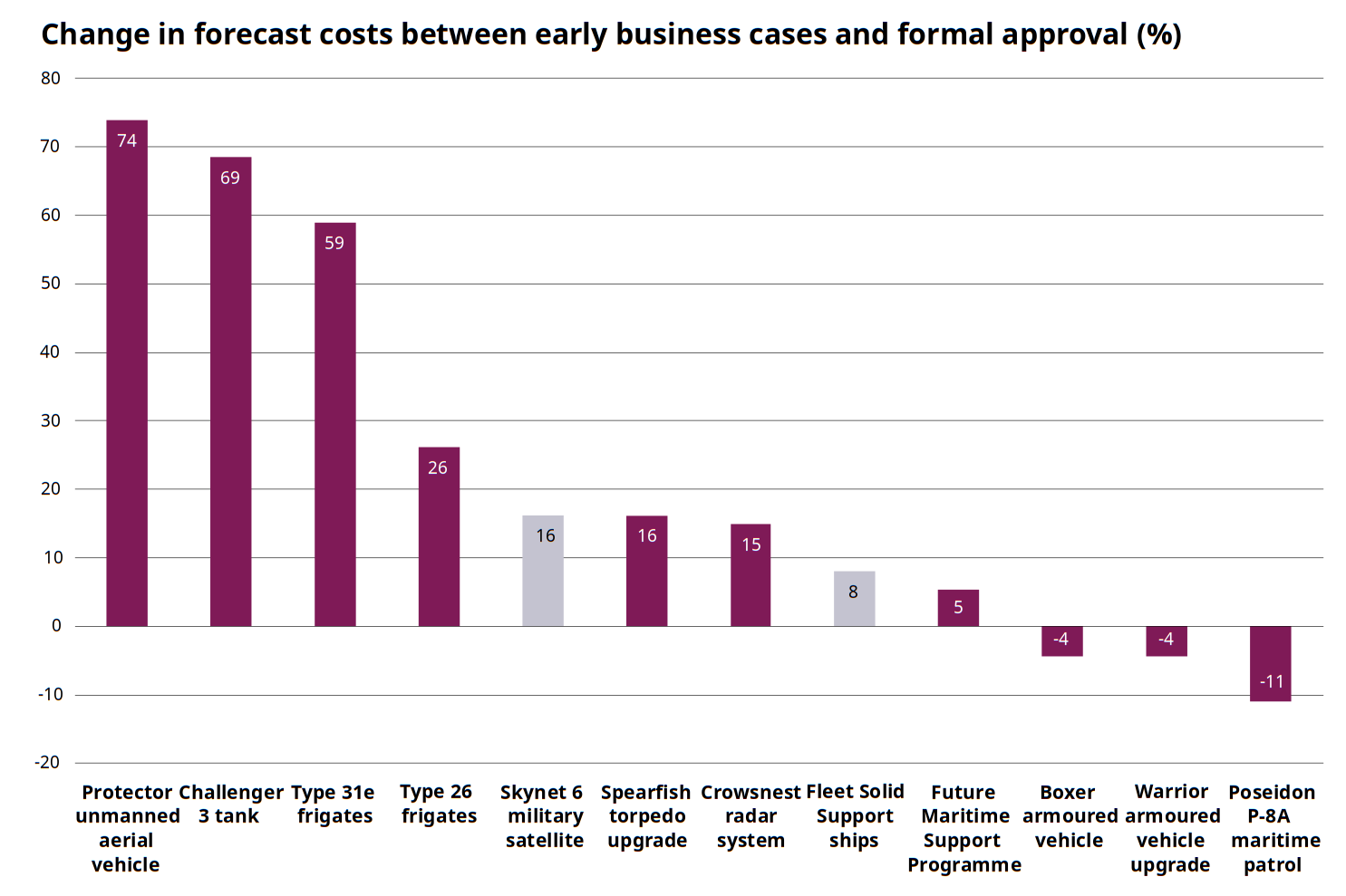The perils of NOTS defence procurement - 'Nearly Off The Shelf'

The latest National Audit Office (NAO) report on the Ajax programme makes for grim reading, primarily because at a time of rising tensions in Europe, the British Army is left relying on obsolete vehicles well past their use by date. But it focused my mind on something that’s been nagging at me for a while – why is it so often the ‘Nearly Off The Shelf’ programmes that go badly wrong? The ones that are ‘based on’ or an ‘upgrade of’ something that already exists?
Ajax provides a live example – it’s ‘based on’ the GD Ascod platform, with the MOD announcing in 2010 - “The design is derived from modifying the ASCOD SV vehicle, which is already in service with some NATO nations, is well-proven and is suitable for export sales”. Many might have assumed at the time that the challenges facing the programme would be centred on the advanced sensors and comms, or maybe the new turret with its unproven CTAI gun, but the biggest problems right now appear to be noise and vibration issues. So how does a “well-proven” vehicle have noise and vibration issues? Perhaps because its actually significantly different to the in-service Ascod, including being wider and heavier.
Others will have their own favourite examples of NOTS programmes going wrong. Maybe the Chinook HC Mk3, ‘based on’ the MH-47E but with a different cockpit that prompted the MOD to admit during the Public Accounts Committee investigation in 2008 “that, particularly when buying existing equipment ‘off-the-shelf’, it tends to specify too many modifications, when what is needed is equipment that is safe, effective and can be made available for operations quickly”.
The NAO’s June 2021 report Improving the performance of major equipment contracts carries an interesting graph of the performance of selected major contracts. I was struck by the comparison between the Type 26 and Type 31 Frigate programmes. The Type 26 is an all-new design of frigate with sophisticated anti-submarine capabilities. The Type 31 in turn is a simpler general purpose ship ‘based on’ Babcock’s Arrowhead 140 design already in service with the Danish Navy. Yet the figure below shows the Type 31 to be running much further over-budget than the Type 26. Why is the simpler NOTS programme faring worse than the complex new warship development?

Part of the problem facing the UK is that it rarely buys a large enough production quantity of any given platform to justify, or has the procurement budget to fund, all new developments of bespoke equipment. Yet it often also perceives its requirements as sufficiently different from other users that genuinely off-the-shelf won’t do either, so we find ourselves in this twilight world of NOTS, specifying significant changes to proven, existing equipment.
So why, time and again, do these programmes descend into NAO-baiting disasters? It’s difficult not to see (admittedly with hindsight) a 'conspiracy of optimism' between both the MOD and the Prime Contractors. The Primes I’m sure will have boasted in their bids of the low risk nature of their offering due to it being ‘based on’ something already in service, subliminally leading all stakeholders to underestimate the risks. Once the risks haven’t been challenged up-front with sufficient rigour, there is a natural reluctance in any programme to recognise and admit that it is deviating badly off-course unless there is robust and independent management oversight in place.
But should we also consider if perhaps the user shares some of the blame, coming back Lieutenant Columbo-style and asking for “Just one more thing” to be added to the requirement? And maybe sometimes political and industrial imperatives add risk by driving changes to design and supply chains to provide workshare for UK suppliers?
There are signs of hope – recent and current procurements such as the P-8 Poseidon, next batch of Chinooks, Boxer, MRV(P), New Medium Helicopter etc. look much closer to genuinely off-the-shelf. We can cross our fingers for the Challenger 3 upgrade, but Ajax looks like it will be providing opportunities for finger-wagging and blame apportionment for a while yet.




